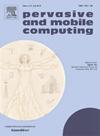导航瞬时内容:基于 NDN 的物联网网络的 PFC 缓存方法
IF 3.5
3区 计算机科学
Q2 COMPUTER SCIENCE, INFORMATION SYSTEMS
引用次数: 0
摘要
物联网(IoT)的出现彻底改变了设备之间的通信。物联网设备通过网络路由器自动收集和传播内容给最终用户。人们对将物联网通信与命名数据网络(NDN)架构集成以有效检索和分发内容的兴趣越来越大。NDN的内容缓存特性对于提高物联网的服务质量(QoS)至关重要。然而,与倾向于保持静态的多媒体内容流量不同,物联网生成的内容本质上是短暂的,每个内容都有有限的生命周期。因此,如果没有高效的物联网内容缓存解决方案,网络效率和用户体验将会降低。现有的缓存方法往往忽略了物联网内容新鲜度、访问模式和路由器在物联网网络中内容放置决策中的位置的重要性。本文提出了一种新颖的基于流行度和新鲜度的缓存(PFC)方案,旨在战略性地缓存位于终端用户设备附近的路由器上的流行和新鲜物联网内容。在提出的解决方案中,使用部署在所有网络路由器上的请求历史队列来确定内容的流行程度。对于高效的缓存决策,跳数度量倾向于靠近最终用户的路由器。在真实的物联网网络拓扑结构上进行了具有真实网络参数的严格模拟。仿真结果表明,PFC方法在几个性能参数上优于现有的最先进的缓存方法(LCE、LCC、消费者驱动、消费者缓存等):缓存命中率、网络延迟、跳数、网络流量和能耗。通过实现高效的内容缓存决策,PFC缓存方法非常适合基于ndn的物联网网络。本文章由计算机程序翻译,如有差异,请以英文原文为准。
Navigating transient content: PFC caching approach for NDN-based IoT networks
The emergence of Internet-of-Things (IoT) has revolutionized communication among devices. IoT devices autonomously collect and disseminate contents to end-users via network routers. There is growing interest in integrating IoT communications with Named Data Networking (NDN) architecture to retrieve and distribute content efficiently. The content caching characteristics of NDN are pivotal in improving Quality-of-Service (QoS) for IoT. However, unlike multimedia content traffic, which tends to remain static, IoT-generated content is inherently transient in nature, and each content has a finite lifespan. As a result, without efficient caching solutions for IoT contents, the network efficiency and user experience would be degraded. Existing caching approaches often overlook the importance of IoT content freshness, its access pattern and the position of routers during content placement decisions in the IoT networks. In this paper, a novel Popularity and Freshness-based Caching (PFC) scheme has been proposed that aims to strategically cache popular and fresh IoT contents on routers located close to the end-user devices. In the proposed solution, the popularity of content is determined using the request history queue deployed on all network routers. For efficient caching decisions, the hop count metric favors routers in close proximity to end-users. Rigorous simulations with realistic network parameters are performed on the realistic IoT network topologies. The simulation results demonstrate that the PFC approach outperforms existing state-of-the-art caching approaches (LCE, LCC, Consumer-Driven, Consumer-Cache, etc.) on several performance parameters: cache hit ratio, network delay, hop count, network traffic, and energy consumption. This makes the PFC caching approach well-suited for NDN-based IoT networks by enabling efficient content caching decisions.
求助全文
通过发布文献求助,成功后即可免费获取论文全文。
去求助
来源期刊

Pervasive and Mobile Computing
COMPUTER SCIENCE, INFORMATION SYSTEMS-TELECOMMUNICATIONS
CiteScore
7.70
自引率
2.30%
发文量
80
审稿时长
68 days
期刊介绍:
As envisioned by Mark Weiser as early as 1991, pervasive computing systems and services have truly become integral parts of our daily lives. Tremendous developments in a multitude of technologies ranging from personalized and embedded smart devices (e.g., smartphones, sensors, wearables, IoTs, etc.) to ubiquitous connectivity, via a variety of wireless mobile communications and cognitive networking infrastructures, to advanced computing techniques (including edge, fog and cloud) and user-friendly middleware services and platforms have significantly contributed to the unprecedented advances in pervasive and mobile computing. Cutting-edge applications and paradigms have evolved, such as cyber-physical systems and smart environments (e.g., smart city, smart energy, smart transportation, smart healthcare, etc.) that also involve human in the loop through social interactions and participatory and/or mobile crowd sensing, for example. The goal of pervasive computing systems is to improve human experience and quality of life, without explicit awareness of the underlying communications and computing technologies.
The Pervasive and Mobile Computing Journal (PMC) is a high-impact, peer-reviewed technical journal that publishes high-quality scientific articles spanning theory and practice, and covering all aspects of pervasive and mobile computing and systems.
 求助内容:
求助内容: 应助结果提醒方式:
应助结果提醒方式:


